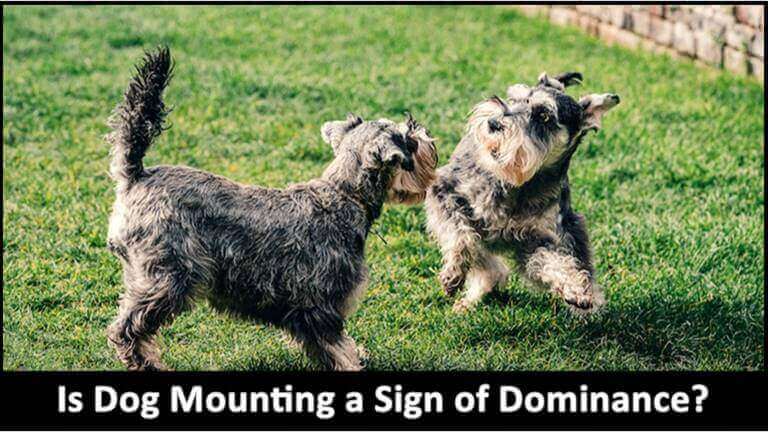Dog mounting, also known as ‘humping’, is a common behavior among dogs in which one dog places its front legs on another dog’s back and thrusts its hips forward.
This behavior that be observed in both male and female dogs. It is a common issue that pet owners may have to deal with, as it can be embarrassing, and annoying. However, it is important to understand why dogs engage in this behavior and why it is essential to address it.
Causes of Inappropriate Mounting in Dogs
Inappropriate mounting or humping is a common behavior in dogs. Both male and female dogs can exhibit this behavior. However, this behavior can be problematic and should be addressed. There are several reasons why a dog may exhibit inappropriate mounting behavior. Here are some of the common causes:
Hormonal Causes
Hormonal changes can lead to mounting behavior in dogs that have not been spayed or neutered. An undescended reproductive organ, known as cryptorchidism, may also contribute to this behavior. In some cases, retained reproductive tissue after spaying or tumors may also be a possible cause of mounting behavior in dogs.
Behavioral Causes
Mounting behavior can be caused by various behavioral problems. It can be a response to stress, excitement, sexual behavior, play behavior, dominance, obsessive or other repetitive behaviors.
Medical Causes
Several medical conditions can cause inappropriate mounting behavior in dogs. These include urinary tract infections, urinary incontinence, skin allergies, and flea infestations. Sometimes, the behavior itself can cause medical problems, such as abrasions and bites to the dog. This is especially true if the object of the mounting disapproves or people try to physically stop the behavior.
Is Dog Mounting a Sign of Dominance?
Mounting behavior in dogs can have several reasons, and it’s not always a sign of dominance. Dogs may mount other dogs, people, or objects due to excitement, playfulness, anxiety, sexual arousal, or simply because it feels good. While mounting can be associated with dominance in some cases, it is not always the case.
Dogs can mount each other during play or social interactions, and it does not necessarily indicate dominance. Additionally, dominance in dogs is a complex behavior that involves more than just mounting. Therefore, it is essential to consider the context and the dog’s body language when trying to interpret their behavior.
Treatment for Inappropriate Mounting in Dogs
To treat inappropriate mounting behavior in dogs, it is important to identify the underlying cause of the behavior. Here are some of the treatments that may help:
Seek Veterinary Help
If you suspect that your dog’s behavior is due to a medical condition, the first step is to take your dog to a veterinarian. If there is no medical issue, your veterinarian can help you identify the underlying cause of the behavior. You can journal or film your dog’s behavior to help your veterinarian determine the reason for the mounting behavior.
Identify the Motivation
Identifying the motivation for the mounting behavior is necessary to determine the appropriate treatment. This could be stress, anxiety, attention-seeking, or sexual behavior. Different forms of treatment may be required for each motivation. For example, regular exercise can help relax a dog that mounts out of over-excitement. By addressing the underlying behavior, such as anxiety and stress, the mounting behavior can be decreased.
Practice Avoidance
When your dog starts the behavior, leave the immediate environment. This helps prevent any encouragement and praise.
Teach or Use Different Commands
Teaching or using different commands, such as sit, leave it, down, and off, can distract the dog during the behavior. Make sure to reward the dog for the command they followed, not for the mounting behavior.
Medications
Medications are sometimes used to decrease the underlying anxiety and stress. Discuss with your veterinarian about your options.
Things to Avoid
When addressing inappropriate mounting behavior in dogs, it is essential to avoid certain actions that can worsen the situation
Avoid Positive Reinforcement
One of the most important things to avoid when dealing with inappropriate mounting in dogs is positive reinforcement. This means that you should not praise or reward your dog for the behavior in any way. Even if you find the behavior amusing or cute, giving your dog attention or treats when they mount can encourage them to continue the behavior.
Avoid Punishment
Another thing to avoid is punishment. Direct punishment, such as hitting, kicking, or yelling at your dog, can not only be ineffective in stopping the behavior, but it can also make the problem worse. Dogs may become fearful or anxious around their owners, which can lead to more stress and tension in the household. Additionally, physical punishment can cause injury to the dog and damage your relationship with them.
Avoid Using Punishing Devices
Along with physical punishment, it’s important to avoid using punishing devices such as shock collars or citronella sprays. These tools can cause pain or discomfort to the dog, and they may not understand why they are being punished. This can lead to confusion and further behavioral problems.
Avoid Reinforcing Negative Associations
Finally, it’s important to avoid reinforcing negative associations with certain people or situations. For example, if your dog mounts when they are anxious or stressed, punishing them may make them associate those feelings with you or other people. This can lead to a breakdown in trust and further behavioral issues. Instead, focus on positive reinforcement and teaching your dog new behaviors that can replace the mounting behavior.
FAQs
Is dog mounting always a problem behavior?
No, dog mounting is not always a problem behavior. As mentioned earlier, dogs may mount other dogs or objects for reasons other than dominance, such as excitement, playfulness, anxiety, or sexual arousal. However, if the mounting behavior becomes excessive, persistent, or is directed towards people, it can become a problem that needs to be addressed.
Can neutering or spaying prevent dog mounting?
Neutering or spaying a dog can reduce sexual behavior, including mounting behavior, but it may not eliminate it completely. Other factors such as anxiety, boredom, or playfulness can still trigger mounting behavior in dogs. Therefore, it is important to identify the underlying cause of the mounting behavior and address it accordingly.
Should I discipline my dog for mounting behavior?
No, disciplining your dog for mounting behavior is not recommended. Dogs do not understand punishment in the same way that humans do, and it can lead to more anxiety or aggression in the dog. Instead, try redirecting their attention to a more appropriate behavior, such as playing fetch, and ensure they receive enough exercise and mental stimulation to reduce their mounting behavior. Consulting with a veterinarian or professional dog trainer can also provide helpful guidance on how to manage this behavior in dogs.
(The blog post has been updated on 20 April 2023, with more helpful information)
More Resources:


